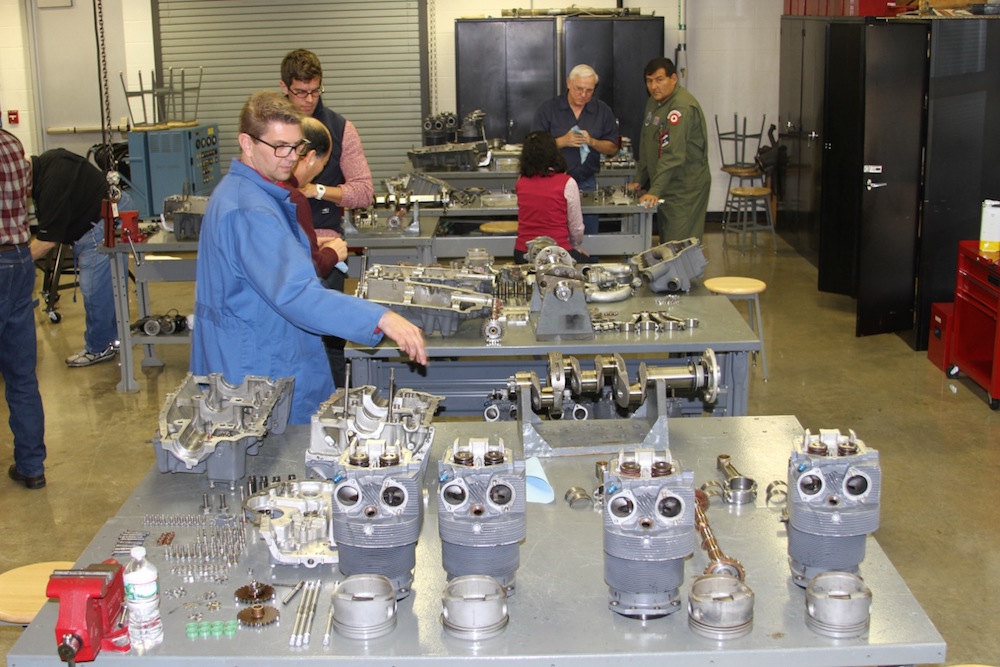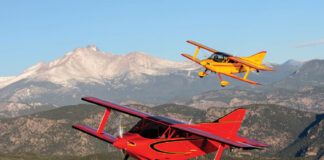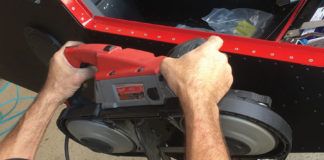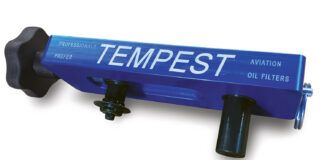
Lycoming’s three-day Engine Disassembly and Reassembly course kicked off this morning, and once again, here we are – this time the goal being to turn a fully assembled Lycoming IO-360 into a pile of component pieces before the mid-afternoon break. With eight students working in pairs on four engines, the classroom was a busy place, with instructor Jim Doebler moving from table to table, giving out tips and advice on how to most easily take things apart without doing any damage.
Lycomings are simple engines – but that doesn’t mean there are a few tricky spots that can through the inexperienced for a loop. There is a way to split a case without damaging the mating surfaces, and just a couple of special tools that will make or break the job. Fortunately, most of those tools can be made, not bought – and the ones in the classroom were good examples.
Disassembly proceeded from removing external accessories to pulling the jugs, splitting the case, and taking apart the crankshaft/rod assembly – the goal being to get everything cleaned up and organized for assembly starting tomorrow morning. The class achieved this early, and was released to enjoy a sunny winter afternoon in the Williamsport area – and to prepare for a long assembly day to come.
Today’s Trivia: Anyone who has pulled a Lycoming jug has heard the warning to never let the rod fall onto the cylinder base opening in the case. Most have been told that this is to prevent nicking the rod – but this really isn’t a problem, for the rod is steel, and the case aluminum. The real problem is that the rod can nick the seating area for the cylinder base O-ring, and doing so will create a potential leak path that you can never fix. So – watch those rods!













